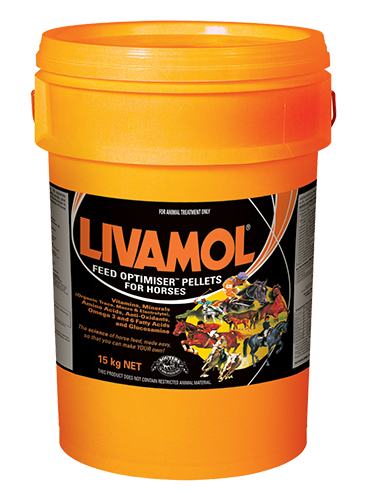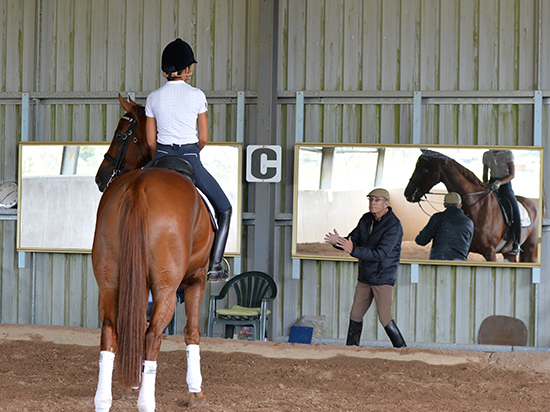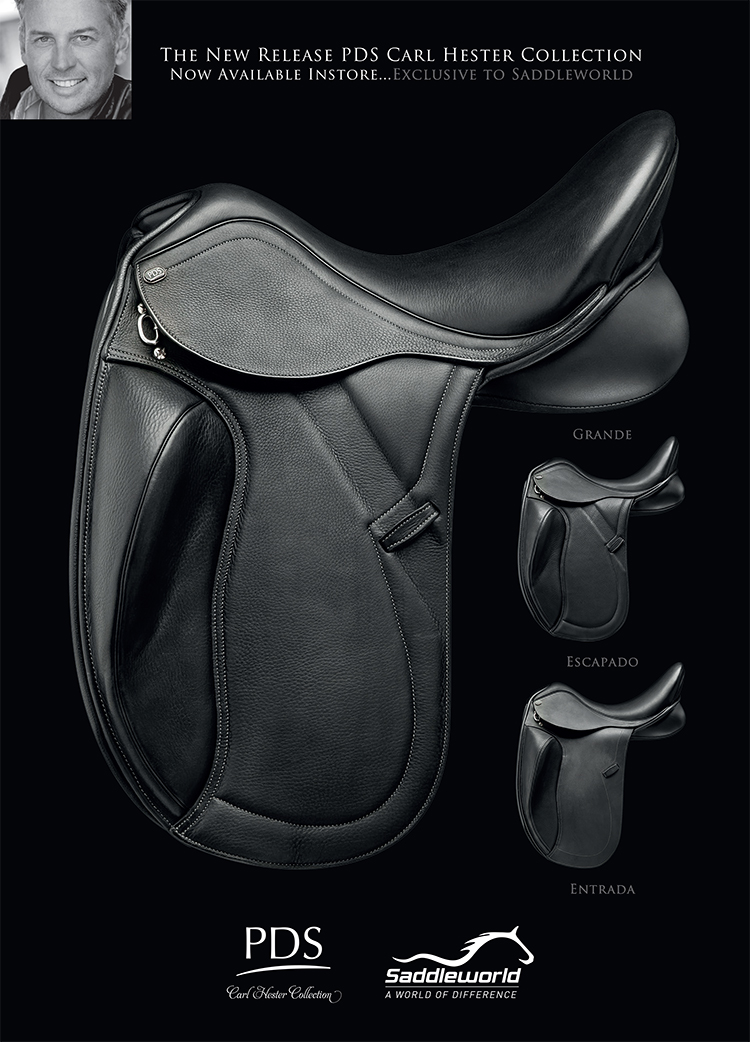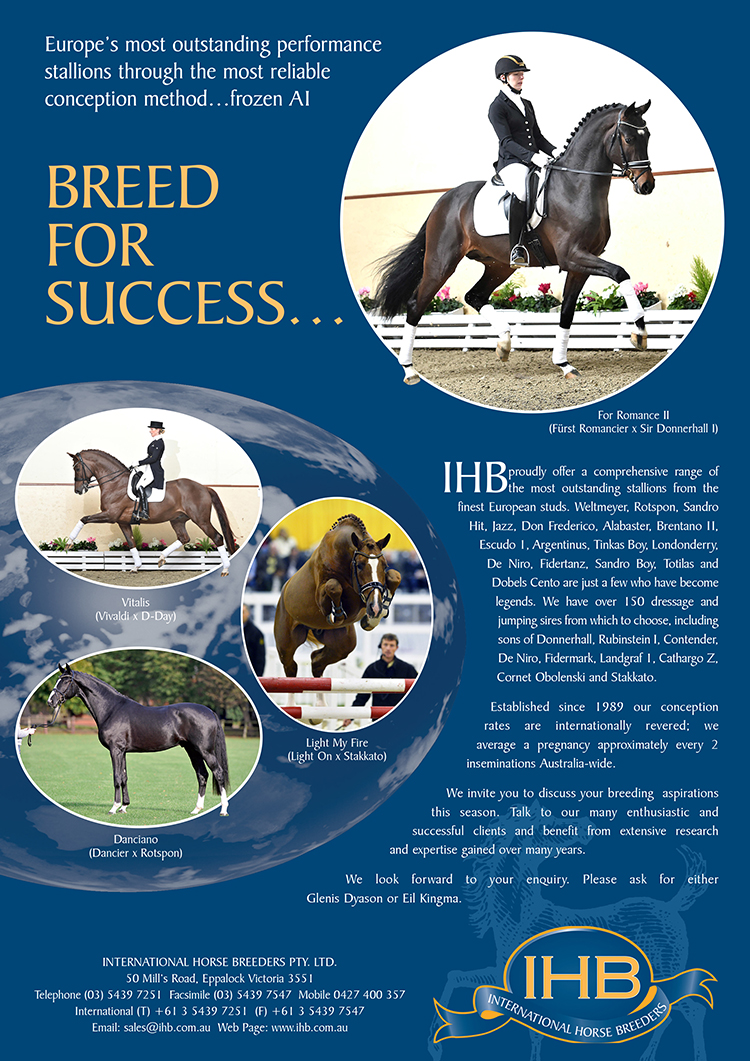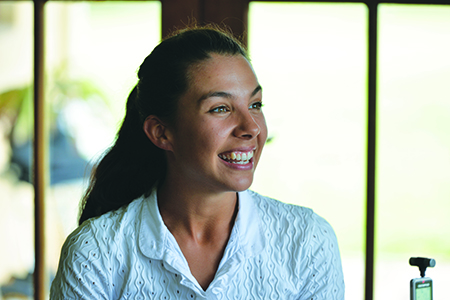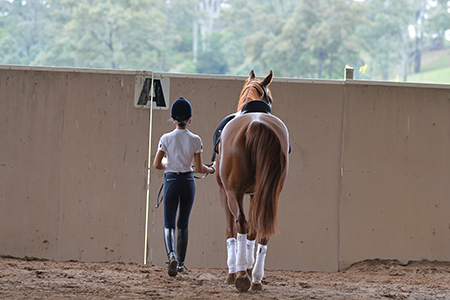As I sit in the indoor school, I wonder in how many hundreds (thousands?) of similar schools around the world, the same scenario is being played out. The dance of horse and rider that is gymnastic training, the dialectic of teacher and student that keeps this art alive… It’s relaxing and stimulating at the same time, and, as always, good training is easy to follow, the steps move logically from one step to the other.
And in the case of Miguel Tavora’s gentle brand of dressage, at its heart is the German Training Scale:
“I know very well what I want to achieve, but I do not have a rigid plan to the lesson, I have a plan to develop the physical ability of the horse, right from the warm up. If I am going to work on the flying change, and if the flying changes were a bit crooked the day before, then I am going to work on making the flying changes more straight and that begins right at the beginning of the lesson, I am working on that straightness. But I am not rigid with the principle, if the horse is not responding in that way, then I must immediately have another way to make him respond, the technique is only important if he gets stuck.”
“I want him to do the exercise in the correct way, not getting stuck because I am trying to get him to respond to my plan and it is not working, no point in that, I have to immediately change. This exercise that I planned to make the horse go straight is not working, erase, this is not backing off, this is being clever. If this way didn’t work, I am going to find another way, because what is important is to make the horse do the right thing.”
As always, I marvel at the ability of real teachers to find endless ways of saying the same thing, differently. On one of Miguel’s treasured little circles, Grace is asked to speed up Karingal Jamirquai’s trot: “Speed up, very active hind legs, then when you collect, that speed becomes elevation.”
And like any real teacher, encouragement is always offered: “That was very good, one pat to him, two pats to you, you are very clever.”
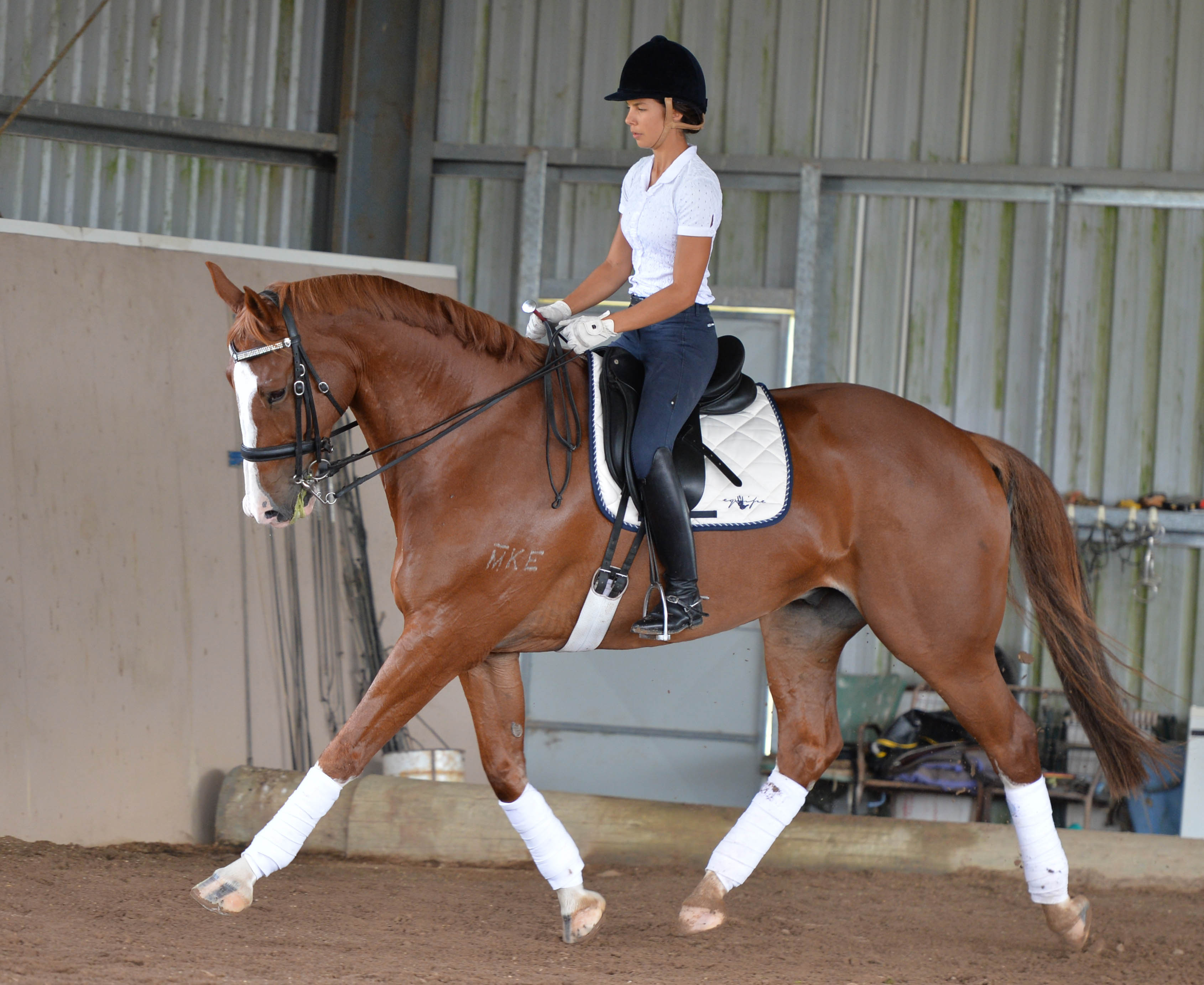
We see the effect in the next exercise, down the long side, “shoulder in, a bit more forward trot, then travers, then collect and elevate,” and into another signature figure of Miguel’s, renvers – travers – renvers, “over collect, and into passage, just a couple of steps.”
more follows
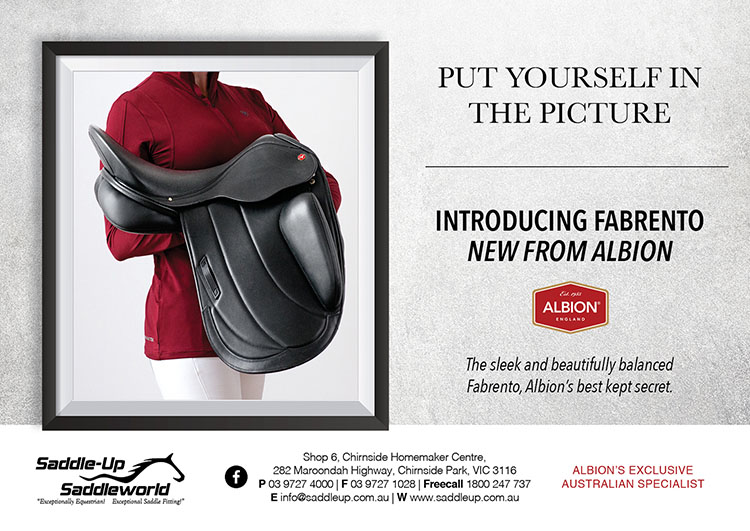
Grace knows what to do next, out on a twenty-metre circle and refresh the trot…
“Collect again.”
And Grace immediately reaches for a little circle, she knows that collection is nothing to do with pulling back, the big chestnut collects and offers a couple of steps of piaffe: “Two steps, pat, I don’t care it is not very good, pat and do it again.”
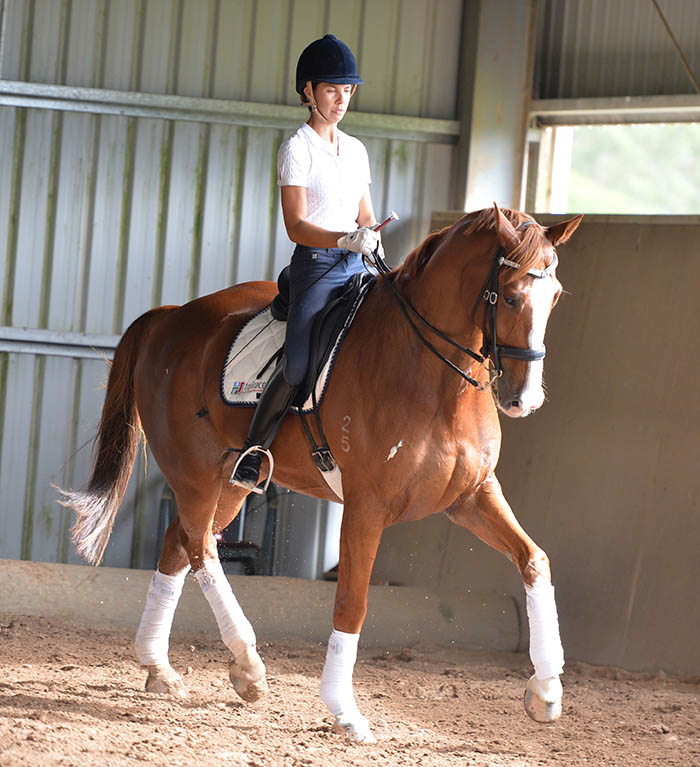
Later, Miguel explains his lesson plan with Jamirquai, and he points out that the little bit of piaffe and passage was more for my benefit, and that he has been moving away from those movements as the horse moves into Small Tour competition.
“My aim is to develop the expression, continue to develop the trot. I taught this horse a bit of piaffe and passage, but now he is working on the Prix St Georges, and I don’t want to mix that in too much. I was working on the pirouettes and the canter, and developing mostly impulsion, mostly following the German scale of training to develop the schwung, the rhythm, the cadence, but on a level to achieve more the collection.”
Certainly the collected work has a dramatic effect on the quality of the medium trot…
The collected work in canter uses much the same technique, the flow from renvers to travers and back again. Miguel makes a very subtle distinction between the principles, which do not change, and technique which evolves and changes with the breeding and type of horse…
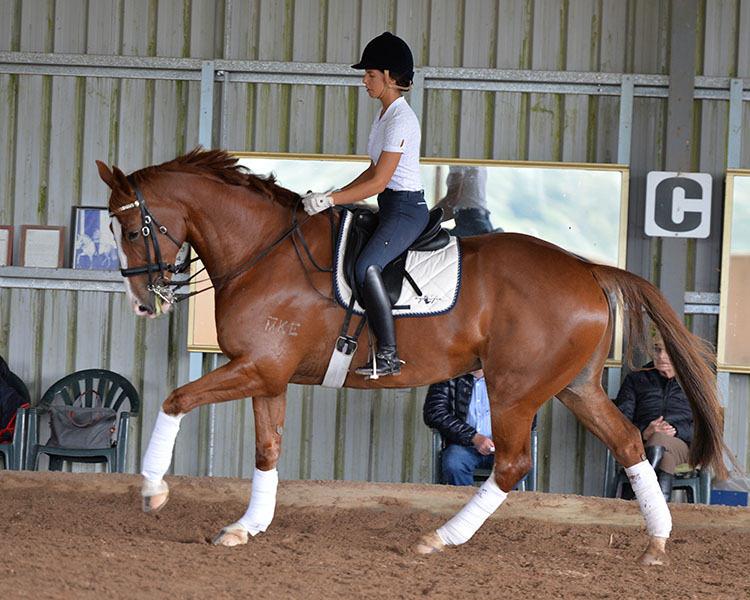
Of the great masters of history, Miguel returns over and over again to Gustav Steinbrecht, who died in 1885, but not before he published his great work, Gymnasium of the Horse, based on the principles of de la Guerinière.
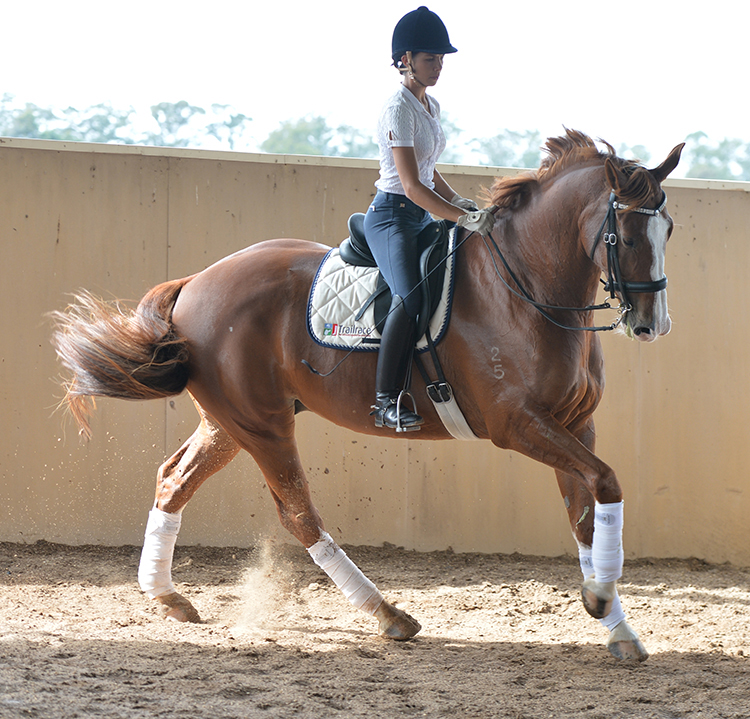
“Steinbrecht is absolutely up-to-date. When I say Steinbrecht, it is the philosophy, the message, not exactly the technique, because the techniques change with the horse, and every time the horse changes, we need new techniques to adapt to the new horse, but the principles are always the same: I want my horse to go straight and to go forward and be able to turn to the left and to the right when I want him to, and I want to be able to stop when I want him to stop, and that is the basis of everything. The principles are the same, the techniques are a bit different.”
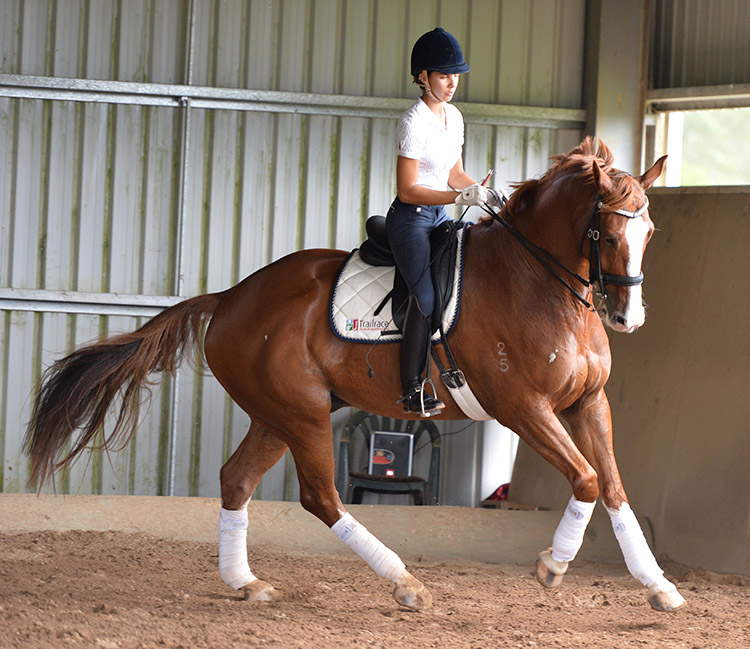
more below
“Even reading about a technique that is no longer necessary, or so useful, with today’s horses, is not a waste of time, because it can help you understand what the correct technique can achieve on the principle you are looking for. If you are working on something and you feel this technique is not working, then you can say, let’s see, with my experience, I can try another technique to achieve the same aim.”
For the canter pirouettes, Miguel is applying the same technique of moving from one lateral bend to the other to increase the collection. “Start on the twenty metre circle to over-collect. Haunches in at the canter, almost on the spot, then open up very straight. Medium, collect, then ask a half pirouette.”
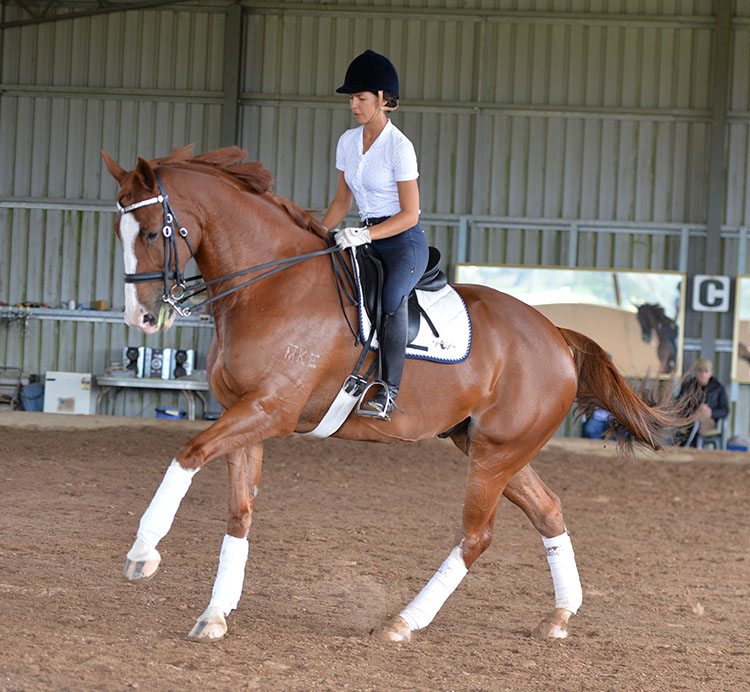
Jamirquai shows a lovely set of four times changes on one diagonal, but when Grace comes on the other diagonal, she feels a problem and heads off on a medium twenty metre circle.
“Good thinking,” says Miguel, who later pays tribute to the special ability of Grace, who, we have to keep reminding ourselves, is only eighteen years old…
“It is very special – riders like Grace with her ability to learn, because riding is a question most of all, of feeling. With those riders with feel, you only need two words to explain something, the minute you say something, they can feel it, and do it. It is much easier than having to explain, then try to make it work, then when that doesn’t work, try to explain another way. Sometimes I will ride the horse and get the horse doing the movement and then give the rider the feeling and understanding, then they can do what they need to do to achieve the feeling.”
more follows
“Riders with natural feeling are very blessed, it is natural for them – I envy them that because everything that I know, everything that I feel, comes from my body and I have to work very very hard to get that feeling. It is very rewarding as a teacher to have a pupil like Grace, sometimes you noticed, I just say half a word, and she is already doing it.”
That’s what I noticed, not just a rider with a lot of feeling but also a thinking rider…
“She felt, she sees, and she decides what to do. Of course the technique is not something they are born with, they have to be taught what to do, but if they feel that they need to do something straight away, then they have to do much less, and can achieve more. You could see that in the lesson, I begin saying something and she is already making the correction. In the past she could feel that something was wrong, but she didn’t know what to do to fix the problem.”
Next Grace rode her showjumper, Faberge
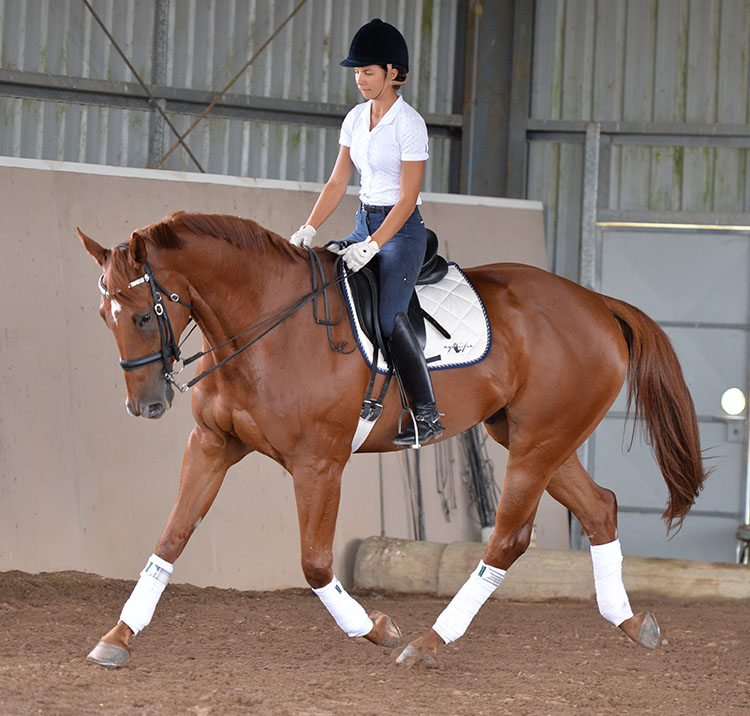
“You remember very well the old German phrase, ride your horse forward and make him straight. Horses are not straight, they are stronger on one side and weaker in the other side. I was trying to make the horse respond to the outside leg, to put the haunches in, but the horse was already bent and instead of responding to the leg, he was leaning on the leg. What I made her do, with outside rein and outside leg, make the horse very straight, and when the horse went straight, he started responding to the outside leg, he was learning to respond to the outside leg, and then he will be more willing to respond to that same leg and put the haunches in.”
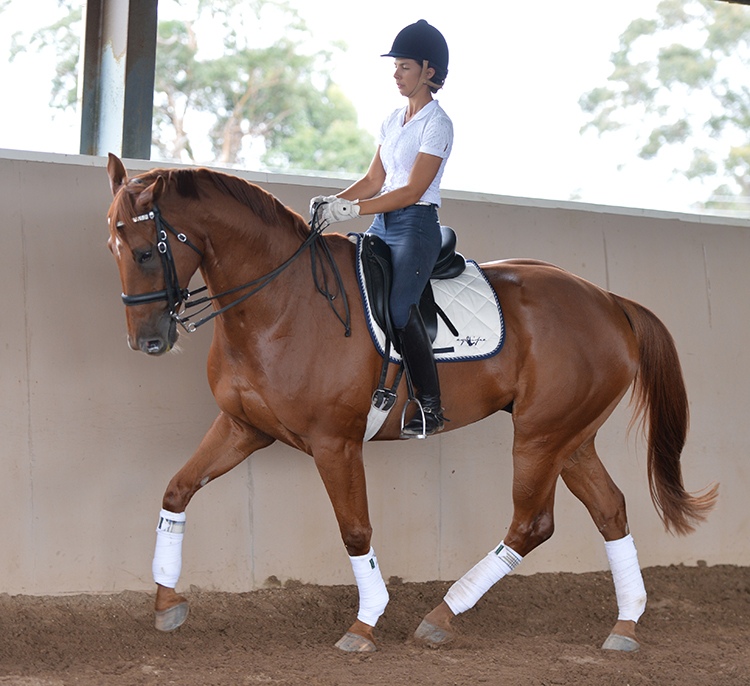
“With this horse, what I was trying to do is exactly the same as with her first horse, but I knew I couldn’t get the degree of collection I got with the first one. Basically it was the same training scale, making the horse loose, straight, forward, rhythmic, step by step, what gymnastic do I need to achieve what the scale tells me to do.”
Is it necessary for the rider to read and learn a lot of theory, or is that just entertainment for old men like you and me…
“I think the theory helps a lot. Even nowadays, I can read an old book that I read 20 years ago, and a phrase which had a meaning for me at that time – and I can see what I felt 20 years ago because my books have notes written all over them – and now I look and think that phrase means something quite different to me now. There is nothing wrong in having a theory. Theory without practice is nothing, but practice without theory doesn’t have any value because you don’t understand what you are doing.”
And of course, this session ends with another completely relaxed, long, loose trot…
next we discuss the lesson with Grace
Five minutes with Grace after the lesson…
“It’s always nice to come here, and have an idea where things are headed, and know that if anything comes up, Miguel is there and has ideas to help you. The horses felt good, they are happy in their work and they are feeling strong. They are confident, and that is something really nice in a partnership. We can ask for new things and push them a bit, and they come with you. I really enjoyed it.”
When you go home do you follow the same pattern in your work?
“Not like the exact same, but the same principles, the same sections, and warm up, trying to build on the same muscles and movements. It might not be the same exercise all the time but I will always try to incorporate the work I have done with Miguel – always the warm up and then the first trot session, building collection, strength, then in the second trot session maybe working on something a bit more, working on what we’ve started with, and then on to the canter. It’s a nice process.”
I was thinking when you were riding the first horse, so often when an instructor says ‘collect’ the rider’s response is to pull their hands back, but your response is always to find a lateral bend somewhere…
“Try and get them to collect themselves. It’s about getting the weight on their back end, for collect, I always think lateral, let the horse sit, let them carry it themselves. Most times that’s shoulder in, or travers, to get them sitting back. I don’t want them to sit heavy into the bridle, I want them to sit back on their haunches and come up in front.”
But some of that work is tough, like the renvers on the little circle…
“Yeah, that’s tough, it’s tricky to get the movements exactly right on that tiny circle, the fluid bend coming around your leg. I try not to go for a perfect movement, but for the overall aim, sit them back up, get them bending, get them stepping up under, try not to be so pedantic on whether their bend is 100% accurate, and whether their flexion is right, more whether the overall movement is achieving what we are trying to do.”
Several times Miguel said, you are not in a competition arena, take a risk…
“Yeah, he says that a lot. He says, we are at home, we’re training, push for something and see what happens. You are not going to wreck everything if we push a little here and there, we are experimenting, playing with the movement, seeing how far we can go, because otherwise we will always stay in our dinky little trot doing little bits here and there. It’s a lot of fun playing with things with Miguel, it’s nice that he has seen so many horses, seen so many riders, that I know if we go for it more, he knows what can happen, and if anything negative happens, it doesn’t matter, we’ll just back off and try something different…”
Story – Christopher Hector & Photos – Roz Neave
Grace Kay is the current IAH Rider of the Month
